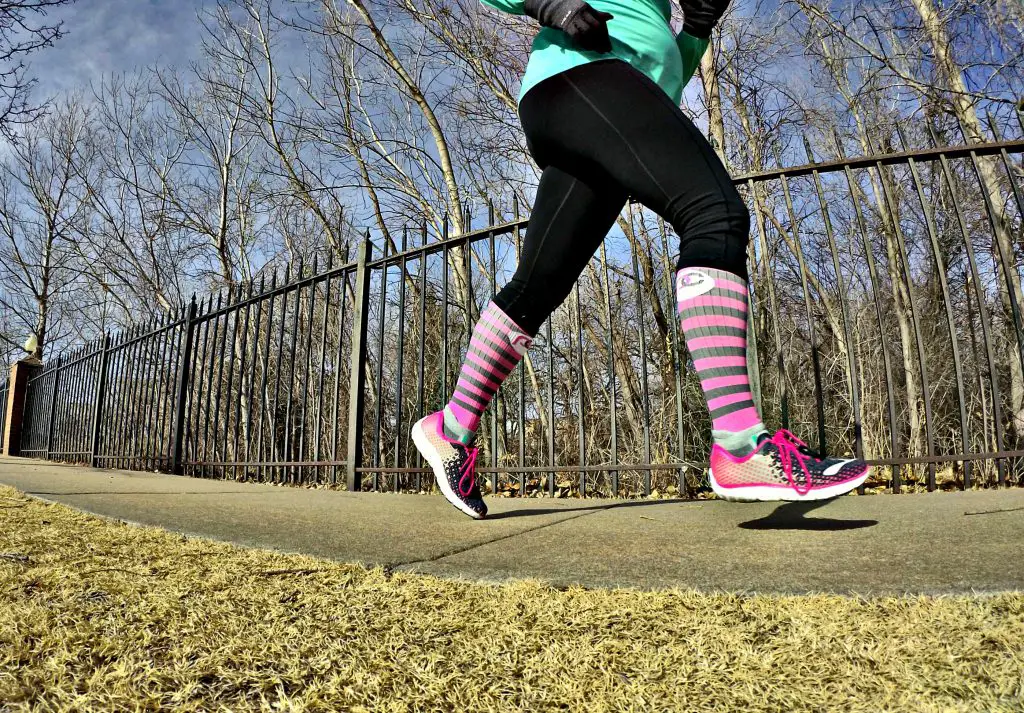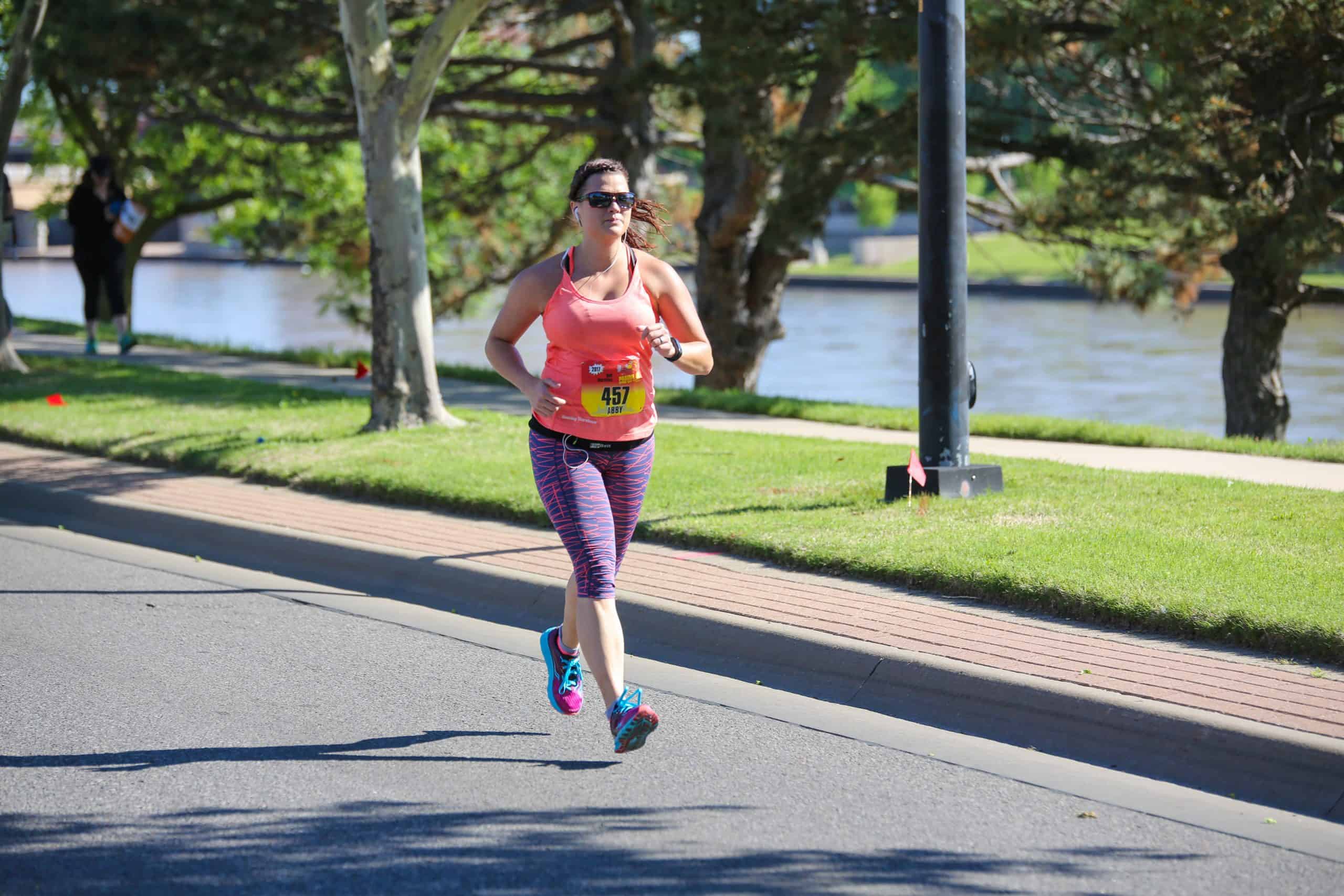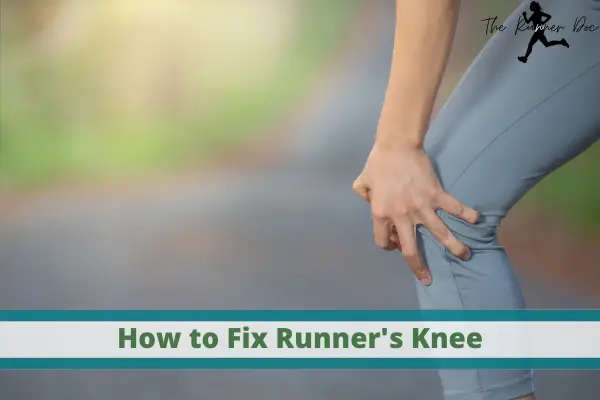How to Fix Your Jumper’s Knee: Patellar Tendinopathy Treatment for Runners
(THIS POST PROBABLY CONTAINS AFFILIATE LINKS. OUR FULL DISCLOSURE POLICY IS REALLY BORING, BUT YOU CAN FIND IT HERE.)
Preventing and Treating Patellar Tendinitis with Physical Therapy Exercises
Have you noticed that a lot of conditions have the “normal” name based on the sport or activity that they affect the most? Runner’s knee, golfer’s elbow, and now Jumper’s knee?
Many have heard of Jumper’s knee and it is actually fairly common in runners. After all, running is just repeatedly jumping from one leg to the next.
Jumper’s knee, also known as patellar tendinopathy is another one of those conditions that used to be called “itis” because of the thought that it was due to an inflammatory process. Now that we know better it is referred to as tendinopathy. Much like Achilles Tendinopathy and Peroneal Tendinopathy, there is a lack of inflammation noted in this condition.
If you want a refresher or very technical explanation of what tendinopathy is then head here to physiopedia for a great explanation!
– – – Ad – – –
Have you been struggling to get a strength training program scheduled to go with all your running? Do you know that you need to strengthen in order to prevent injury as well as improve your times?
Check out my Run Strong Program.
A strength program designed by a Physical Therapist specifically for runners. It is customizable and repeatable to use over and over again and continue to see progress!
The phases of the program are periodized to match and complement any running training program from short distances to marathons and beyond!
The best part? You get lifetime access to it for only $30.
The only remaining question is….what are you waiting for?! Help yourself become the best and strongest runner you can by adding in strength training today!
– – – End of Ad – – –
What is patellar tendinopathy: Jumper’s Knee
Patellar tendinopathy is an overuse injury of the tendon that attaches your kneecap (patella) to your shinbone (tibia). The patellar tendon helps you extend your leg when you straighten your knee.
Formerly called patellar tendonitis, Jumper’s knee is a combination of inflammation, degeneration, or rupture of the patellar tendon caused by unaccustomed or excessive tension forces. The reason for such a long and wordy definition is due to the multifactorial causes of tendinopathies.

Anatomy of Patellar Tendinitis
The patellar tendon connects the kneecap (patella) to the top of the tibia (shin bone). The tendon is somewhat of a continuation of the quad tendon. The quadriceps tendon starts at the quad muscle and attaches to the kneecap.
A small detour and background/anatomy lesson. The two tendons (patellar and quad) actually start as a single tendon until we are about the age of 3. At this age, we develop our patella (kneecap) which is a sesamoid bone. A sesamoid bone is a tiny bone that may be found embedded within a muscle or tendon near joint surfaces, where it develops and serves as a pulley to relieve strain on that muscle or tendon.

Back to schedule, so when you contract your quad muscles your patellar tendon is pulled. This in turn straightens out your knee. Which as most of you know is crucial when running, kicking, and jumping.
Related: Fix your Shin Splints
How to Diagnose Patellar Tendinopathy
Due to patellar tendinopathy being an overuse injury with a gradual onset of pain, it can be difficult to diagnose in the early stages.
One of the most important things you can do is be honest with your medical professional about when your pain started, what makes it better/worse, and how it has progressed.
A recent increase in training volume is a huge indicator that your pain is due to patellar tendinopathy (tendonitis).

There are two main clinical presentations that indicate a patellar tendionpathy vs another issue in the knee.
- You will have pain localized to the bottom part of the patella (inferior pole), you can point directly to where the pain is.
- You will have pain that is related to load. This means pain increases with the increased demand on the knee extensors.
For example, going up and down stairs or increasing your mileage.
Testing for Patellar Tendinopathy
There is one main test that is done for patellar tendinopathy, the single-leg decline squat. This is a provocation test, meaning if it makes the issue appear/worse then it is considered positive.
How to do the Single-Leg Decline Squat test for Jumper’s Knee
Start by standing on your affected leg on a 25-degree decline board. While maintaining an upright posture you will squat up to a 90-degree angle in the knee if possible.
Repeat the test on the unaffected leg to compare ability and symptoms.
For each leg, you will compare how much knee flexion/bend you are able to obtain as well as a pain rating.
The pain should be isolated to the tendon/bone junction at the inferior pole of the patella and not spread.
This test is also a great way to monitor how well you are progressing or worsening with your injury during recovery.
The symptoms of patellar tendinopathy include:
- Anterior knee pain at the bottom of the kneecap
- little to no pain when at rest
- pain with loading that almost immediately goes away when the load is removed (jumping, running, etc)
- Pain with walking downstairs or performing a deep squat
How to treat and prevent patellar tendinopathy
Remember that these are general tips and advice but that each person’s recovery will require different and specific treatment.
The first thing when dealing with tendinopathy is to modify activity. Notice that I said modify and not stop doing the aggravating activity.
The hardest thing about jumper’s knee with modifying running is that it usually starts to feel better as you warm up and get going. Unlike some other tendinopathies where it hurts more the longer you go. Therefore just shortening your run won’t be a way to modify this go around.
Try shortening your cadence to prevent overstriding or trying different shoes. If those two things don’t help with the intensity of the pain then a very very short break will be necessary.
Best Jumper’s Knee Exercises for Runners
A lot of research has been done over the years on how to treat tendons. It is a huge topic in the rehab and sports medicine world due to the prevalence of these injuries.
The primary consensus on treatment for tendinopathy is loading of the tendon. The goal of the loading exercises is to increase the tolerance of the tendon with loaded activities.
What I mean by loading is any activity or movement that puts stress on the tendon. We want to start loading with isometric activities and then progress to slow and light concentric exercises to faster heavier and then finally plyometrics. During these phases we want to let pain be our guide.
For a simpler way to look at this we can divide the rehab into 4 phases.
- phase 1 – isometrics
- phase 2 – slow and light concentric
- phase 3 – Heavy and slow concentric exercises and plyometrics
- phase 4 – Plyometrics and maintenance
If you are using these exercises for prevention then we will mostly ignore the phases!
Varying Angle Wall Sits for Patellar Tendinopathy
Do a wall sit at different angles of your knees to get the full benefit!
Spanish Squats to Prevent Patellar Pain
Single Leg Box Squats
Line Hops
These are better used for prehab and to prevent jumper’s knee. If you are having significant pain you should always get evaluated by a Doctor of Physical Therapy to see what is specifically going on in your knee. The best rehab programs are specific for each individual based on their own biomechanics.
Can you run with Patellar Tendinopathy?
The short answer is yes, but with caution. Patellar tendinopathy can be a very slow-to-heal injury and if you return to running too soon you risk further injury and lengthening your recovery time.
My rule of thumb when running is to keep the pain between a 0-4 out of 10 pain during the activity and it should settle within 24 hours. If you can’t meet that criteria then try backing off more in frequency or duration.

If you are returning to running after a period of rest or modification due to patellar tendinopathy then it is important to ease back into things gradually.
Start with a walk/run program, slowly increasing your running time and distance while monitoring your symptoms. If you start to experience pain then it is important to back off and give your body more time to heal.
Patellar tendinopathy can be a frustrating injury, but with the proper treatment and care, it is possible to return to running pain-free.
Jumper’s Knee Patellar Tendon Strap
I’m not a huge fan of braces, straps, insoles, etc. However, a patellar tendon strap like this one can have some benefit. Especially early on when you are still trying to get some relief from exercises they can be beneficial.
Remember though, these straps are a temporary bandaid and not a fix!!
Final Thoughts on How to Prevent Patellar Tendinitis
Patellar tendinopathy is a common injury for runners and can be frustrating to deal with. However, there are many treatment options available that can help you return to running pain-free. It is important to start with a modified activity level and then progress slowly as you increase the stress on your tendon.
With proper care and treatment, you can return to running without pain! As always, prevention is the best way to treat an injury so make sure you are following a good training plan and strengthening regularly!
Resources
Craig R Purdam, Jill L Cook, Diana M Hopper, Karim M Khan, VIS tendon study group, Discriminative ability of functional loading tests for adolescent jumper’s knee, Physical Therapy in Sport, Volume 4, Issue 1, 2003, Pages 3-9, ISSN 1466-853X,
AFFILIATE DISCLOSURE
As an Amazon Associate, I earn from qualifying purchases. This post may contain affiliate links. If you use these links to buy something we may earn a commission. The Site may contain links to affiliate websites, and we receive an affiliate commission for any purchases made by you on the affiliate website using such links.
All information should be used as a tool for more knowledge on the subject topic, to use as references for later articles where applicable, or just to keep it in mind during future exercise routines or activities.
This article is not meant to give medical advice or to replace professional health care. Should any ailment occur please contact your doctor or physical therapist immediately to keep yourself safe and prevent further damage.
The author is not liable for any personal or commercial damage directly or indirectly related to the content hereof. You are responsible for adhering to local laws and regulations regarding health & safety, including proper use of equipment or safety gear, and compliance with governing healthcare associations, and state, and federal regulations.
How to Fix Jumper’s Knee in Runners

Dr. Abby Siler, PT, DPT is a Physical Therapist with 10 years of experience in a variety of settings. She has spent the majority of her time treating athletes in orthopedic clinics and worker’s compensation cases. She is a runner herself for the past 15 years and a lifelong athlete. Dr. Abby loves to teach runners how to stay injury free and out of her clinic.







